Users looking for the best photo editing application can turn to several options available for Android and iPhone (iOS) phones. Apps such as Snapseed, Afterlight, and Photoshop Express have advanced controls that allow you to improve image quality and even have effects to give your photos a special touch. To help you choose the best application among so many available online stores, Techidence has prepared a list with eight editors. Check out the functions, differentials, and pros and cons of each app.
1. PicsArt

PicsArt is considered one of the best free apps for editing photos and making collages. The app has features such as filters, effects, textures, and masks, as well as adjustment tools. To access extra features, such as the object remover, users need to subscribe to the Gold version, which costs $4.66 a month.
PicsArt is also well known for allowing you to replicate edits made by other users on their images. To do this, simply tap “Replay” on any photo displayed on the application’s homepage, and then swap the image of the editing template for one from your gallery.
- Pros: Packs a lot of tools; provides effects popular on social networks; allows free cropping;
- Cons: Heavy.
2. Snapseed
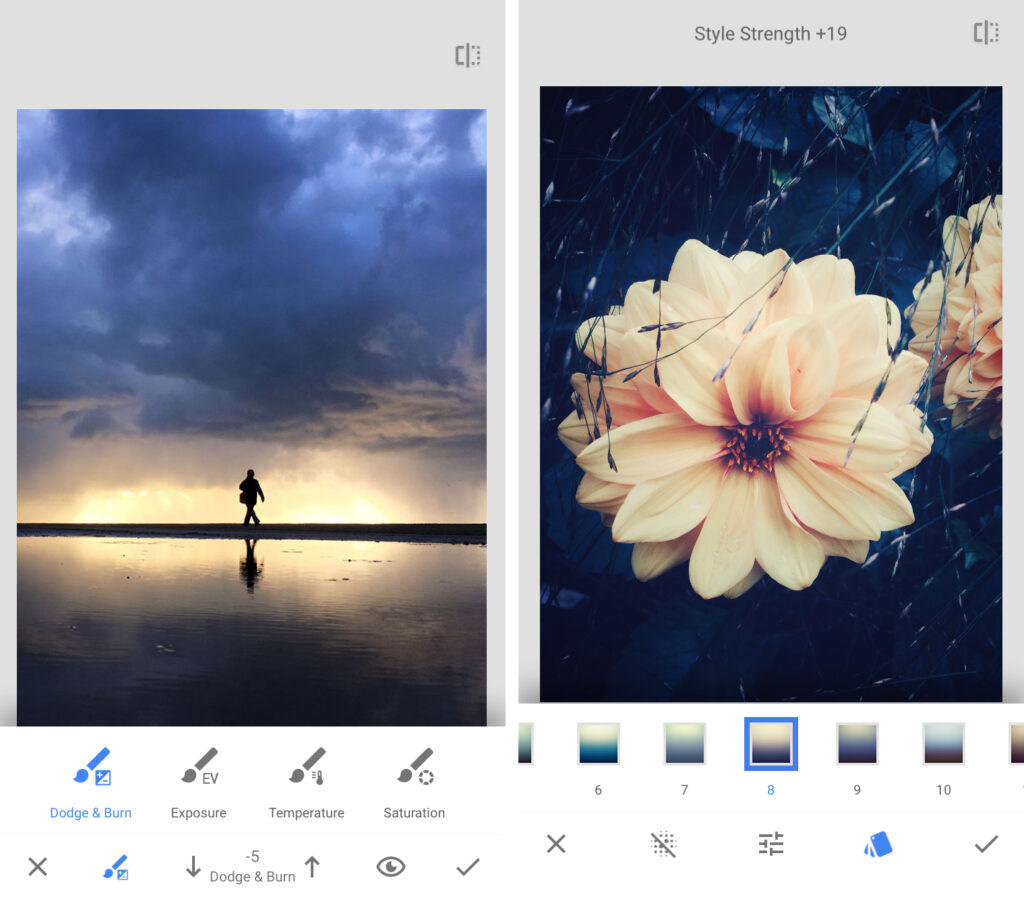
Snapseed is Google’s photo editor. The application has a simple three-screen layout and includes editing features found in professional software. By tapping on “Tool” the user can balance lighting, adjust colors, change image perspective, and more.
It is also possible to apply filters and effects, such as HDR Scape, Vintage, and Noir. To adjust the intensity, simply drag your finger to the left or right. Another interesting feature is the “undo” feature, which allows you to undo actions taken previously, like Photoshop’s “Ctrl+Z”.
- Pros: Free; good performance; quality features; easy editing;
- Cons: Does not allow you to overlay images.
3. Adobe Lightroom
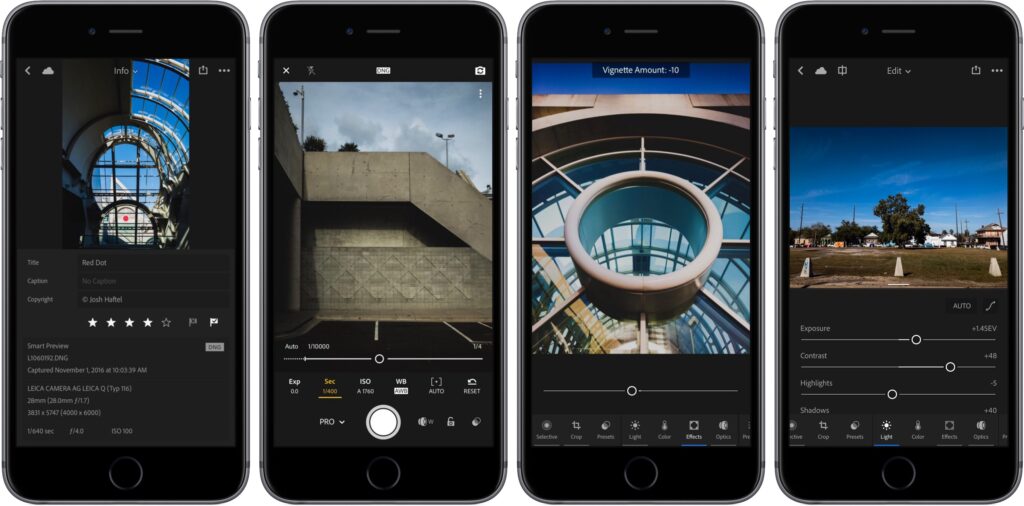
The Lightroom application brings some of the features of Adobe’s photo editing software to the cell phone. Besides having native presets to adjust the color, brightness, contrast, and texture of images, the app allows the user to save third-party photo presets and create their own presets. Among the highlights of the editor is the “automatic” function, which, with just one touch, applies effects to improve image quality.
The professional look of Lightroom and a large number of features can intimidate less experienced users, but do not prevent the use of the application, which provides tutorials and tips in the start menu. Although the app is free, tools such as people and object removal are only available in the premium version, which costs $9.99 per month.
- Pros: professional presets; inexpensive subscription; “automatic” feature;
- Cons: Layout is not very intuitive.
4. VSCO
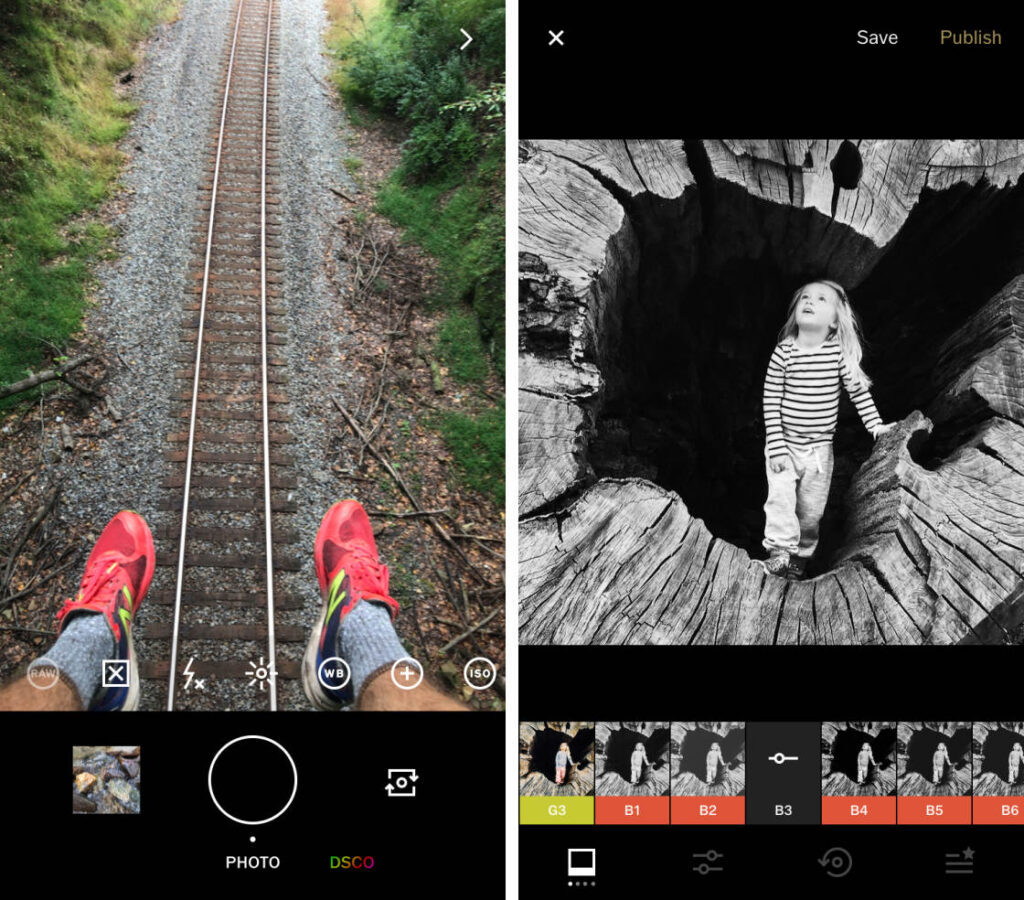
VSCO is a very popular editing app among Instagram users; the app’s filters are applied to many photos posted on the social network. As far as editing tools go, VSCO has features such as HSL (increase and decrease intensity) and Split Tone. It is also possible to add frames to images, adjust contrast, exposure, and brightness in photos.
The app only offers 12 filter options in the free version, and the premium subscription of the service, which unlocks several other effects and features, costs $20 annually. To access the application, you must create an account, since VSCO also works as a social network. Users can even post edited photos on their profiles.
- Pros: filters that please users and are a success on social networks;
- Cons: Premium subscription price is high.
5. Adobe Photoshop Camera
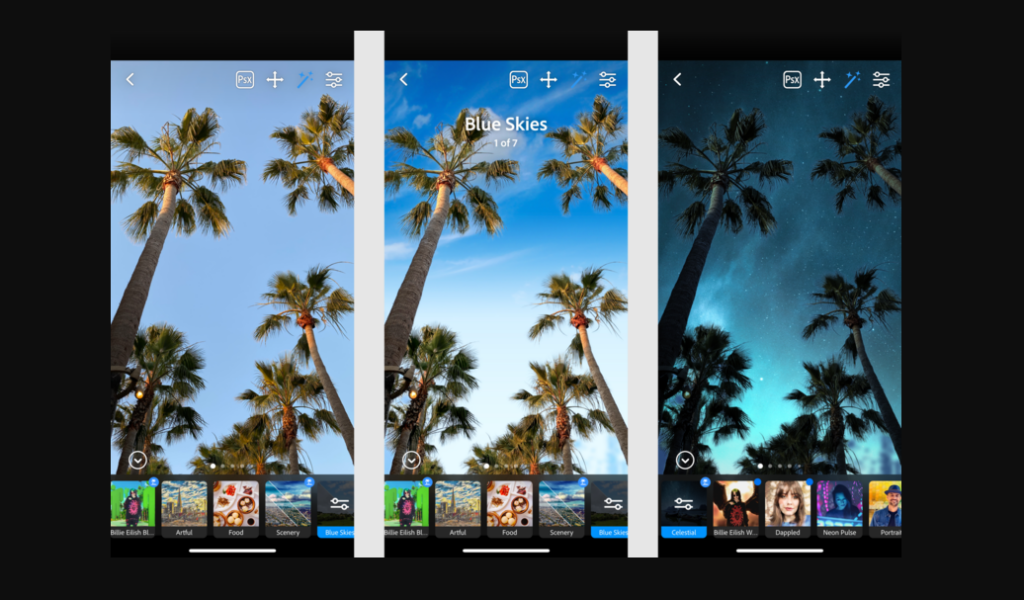
With artificial intelligence (AI) tools, Adobe Photoshop Camera is another editor option. The app contains real-time filters, like the Instagram feature, and brings together about 100 effects – including Portrait Mode. In addition, the platform provides photo treatment controls to optimize lighting and eliminate shadows.
Play Store users point out positive points of the app the ease of use and the quality of the effects and filters. Among the negative points, one can mention the slow processing. The app is compatible with iPhone 6s or higher, starting with iOS 12; and specific Android devices such as Samsung S9 and S10, Samsung Galaxy M62, Pixel 3/XL, and OnePlus 6/6T, starting with Android 9.
- Pros: effects and filters please users; free;
- Cons: the app is not compatible with many devices; slow processing.
6. Adobe Photoshop Express
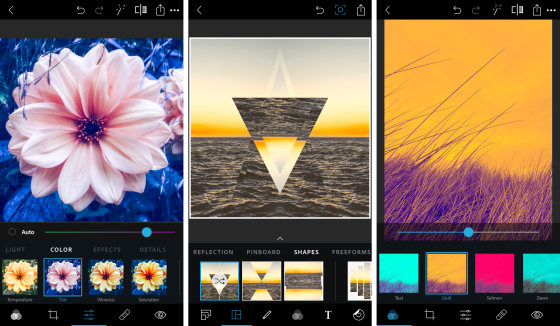
Also owned by Adobe, Photoshop Express is one of the best photo editors for cell phones. It has blur effects, spot remover, people and objects, a red-eye corrector, a text tool, and even allows you to add stickers to your photos. In addition, you can treat your images by adjusting sharpness, exposure, contrast, shadows, and more.
The app also features light beam, paper, watercolor, and rain textures, and allows you to combine filters with effects. Like Lightroom, Adobe Photoshop Express also features an automatic function that allows you to edit the photo in just one touch. The monthly subscription which offers access to all tools costs $4.99 per month.
- Pros: Good performance; automatic editing;
- Cons: Not as many free filters and effects options.
7. Tezza
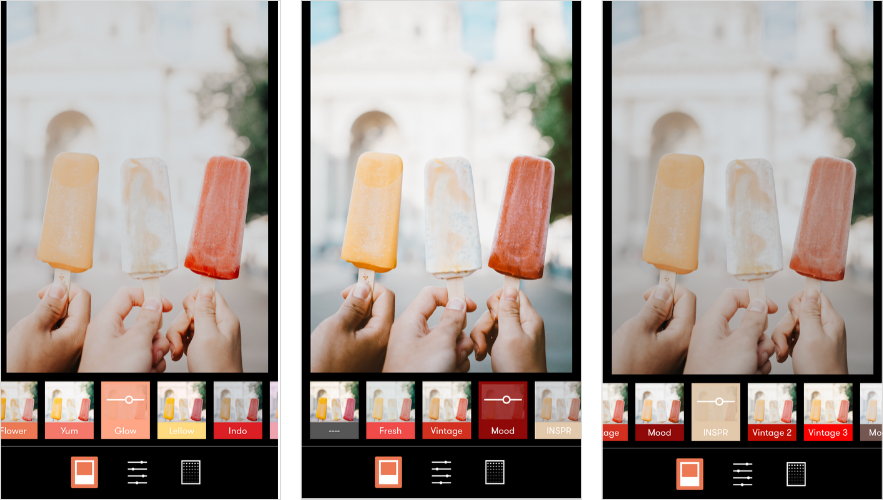
Tezza is an “aesthetic” photo editing tool. The app brings together 19 presets and frames that lend a vintage, indie, and retro aesthetic to your images. In addition, the app features tools to adjust properties such as exposure, contrast, temperature, saturation, and more. Textures such as light beams, shadows, and dust can also be added to photos.
All tools are free in the free version, but many filters, frames, and textures can only be used if the user subscribes to the premium version for $1.99 per month.
- Pros: aesthetic-looking filters, textures, and frames;
- Cons: crashed; many features are blocked in the free version.
8. Afterlight
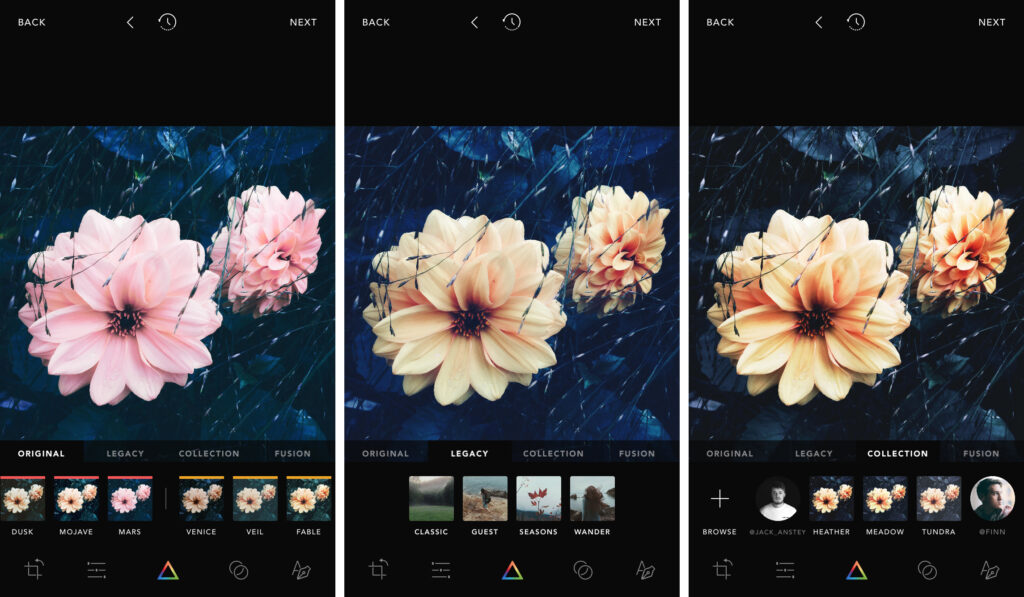
Afterlight has 15 adjustment tools to improve image quality. You can tweak properties such as saturation, brightness, colors, and exposure. The app also features various textures, such as light leakage and dust look, and filters that can be applied to the photos. After editing, the user can select the resolution in which to save the file.
Although the application is in English, the simple layout allows you to apply filters and use the editing tools without complications. However, it is worth noting that the last update to the Android version was in 2014. As such, Afterlight has not received any new features and filters since then. The app is free, but some items, such as textures and frames, are sold.
- Pros: Simple to use; textures;
- Cons: Android version has not been updated since 2014; available only in English.
This post may contain affiliate links, which means that I may receive a commission if you make a purchase using these links. As an Amazon Associate, I earn from qualifying purchases.

